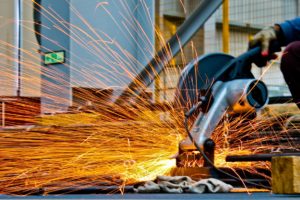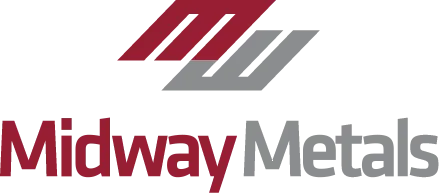You already know stainless pipe keeps plants running and scaffolds standing, but deciding between seamless vs welded stainless pipe can still stall a job. Below we walk through real-world trade-offs; pressure, corrosion, cost, and show where Midway Metals’ stock, cut-to-length service and 24/7 tech support remove the headache.
Which is better, seamless or welded SS pipe?
Seamless takes higher pressure; welded wins on price and availability. Because the welded seam can act as a weak point under pulsating load, seamless shines in hydraulic and offshore work. But the quicker manufacturing process for welded tubes means shorter lead times and fewer back-orders; handy when the client needs the steel by Friday.
Pressure, wall thickness and that ever-looming safety factor
Engineers live and die by working pressure. Seamless boasts uniform wall thickness with no seam, letting it comfortably withstand high pressure spikes. That’s why it rules in steam generation, chemical injection skids and other extreme conditions.
Yet don’t write off welded pipe. Mid-sized and large diameter pipes in Schedule 40 or heavier can match seamless ratings once the weld is ultrasonically tested and, if needed, over-laid with filler material. Midway keeps both types on the floor; from ½-inch instrumentation tube to 600 mm line pipe, so you’re never stuck waiting for an overseas mill slot.
Corrosion conversations: grade first, pipe type second
If the medium is salt water, caustic soda or just plain Brisbane humidity, corrosion resistance ranks ahead of everything. Midway mainly stocks austenitic stainless steels; 304/304L for general duty and 316/316L for chloride service.
What is the difference between 304 and 316 stainless steel pipe?
316 adds molybdenum; it fights chlorides, making it the go-to for marine and chemical processing. Because both welded and seamless start with the same stainless steel grades, their base corrosion performance is equal. After welding, Midway’s in-house pickling line strips scale and repassivates the heat-affected zone, so the final surface offers the best corrosion resistance even in harsh chemicals.
Fabrication Realities On-Site: dollars, deadlines and procurement

You already guessed it: seamless is pricier. Billet piercing wastes metal, multiple draw-passes chew energy, and global billet pricing swings daily. Expect 15–30 percent above welded for comparable size and grade.
Can stainless steel pipe be welded?
Absolutely, use TIG, MIG or stick with matched filler and an argon purge. Your boilermakers won’t notice a big difference between the two pipe styles once they’re bevelled. Both arrive annealed; both like low heat input; both demand clean prep. Where welders do notice a change is heat distortion on thin wall welded pipes, Midway’s bevel-cut service lands pipes site-ready, saving a couple of grinder discs and your welder’s good mood.
Why are welded pipes preferred over seamless pipes?
They cost less, ship faster and cover a large base of everyday industrial specs. If your spec reads “general corrosive service” or “ANSI B31.3 Category D,” welded pipe ticks the box and leaves budget for valves. On the flip side if you’re working with refinery turnaround or high-cycle fatigue on a compressor discharge; it might be worth paying a bit more for seamless so you can sleep better.
Which is better, seamless or welded pipe fittings?
Seamless elbows remove weld lines in tight bends; welded fittings keep costs down for standard duty. Midway carries both. If you’re bending 316 L through 5D radii for high pressure applications, seamless elbows mean one less axial weld to X-ray. For architectural applications (think handrails at a new hospital), welded fittings are faster to polish and still pass the salt-spray test.
Some Real-World Examples
Every job site is a little different, but the same decision points keep popping up. Here are some examples of how Midway’s team typically walks clients through the seamless-vs-welded call.
- Food-grade wash-down lines
A dairy or brewery swaps out carbon steel for 316 L stainless to avoid rust flakes in CIP circuits. Welded pipe usually wins because it’s cheaper, comes mirror-polished, and is already stocked in hygienic sizes. Midway’s cut-to-length service ships pre-bevelled tube that slips straight into your orbital welder, saving site time and preventing grinder contamination.
- High-pressure slurry or paste reticulation
Underground mines push thick slurry at 10–15 bar. That surge load plus abrasive solids puts extra stress on any longitudinal seam, so engineers lean toward heavy-wall seamless. Midway checks the pressure spec, confirms schedule and diameter, then sources seamless lengths with ultrasonic test reports so the pipe clears mine-site QA without delays.
- Coastal or architectural balustrades
Handrails on a marina boardwalk need corrosion resistance and a showroom finish. 304 or 316 welded tube is fine once it’s pickled, passivated and polished. Midway stocks bright-annealed welded tube, supplies matching elbows and flanges, and advises on post-weld clean-up so the stainless keeps its shine under corrosive environments like sea spray and other marine applications.
What are the different types of stainless steel pipes?
Seamless, ERW pipes, laser-welded and spiral-welded for jumbo diameters. Beyond 304/316, duplex 2205 tackles sour service; 904L laughs at sulphuric acid; 321 handles high temperature exhaust. Midway keeps certificates on every heat, so QA can chase a heat number long after the plant is live.
What are the different grades of stainless steel pipes?
At Midway Metals, we stock various types of 304/L, 316/L, duplex, super duplex, 904L and more; each balances strength and corrosion to your project’s specifications.
When making the final call, remember to ask these four questions:
- What’s flowing, and at what pressure or temperature? Harsh chemicals or 200°C steam lean toward seamless; town water at ambient is welded territory.
- What grade fights that corrosion best? Pick 316L for chloride, 2205 for mixed acids, then revisit pipe type.
- What does the project schedule allow? If the crane arrives in six weeks, you can import seamless; if it’s next Wednesday, grab welded off Midway’s rack.
- Do the specs lock you in? Some clients request “seamless only.” Others accept welded if NDT reports and pressure tests are on file, Midway provides both.
What Midway Metals adds to the mix

- Australia-wide warehouses keep stainless close to every capital city.
- Bandsaw, plasma and flange processing machines on the floor; meaning pipe, sheet and fittings can be customised in one order.
- 24/7 technical hotline for welding methods, acid cleaning advice or urgent MTC copies.
- Pick-pack logistics that bundle pipe, elbows, gaskets and even pickling paste into one delivery. Less time spent chasing, more time to install.
Still not sure after ticking those boxes? Call Midway’s technical line, shoot through the spec sheet, and we’ll map out options, complete with costs, lead times and any code considerations; so you can order the right pipe the first time.
